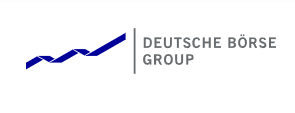Complex investments
A growing number of insurers are investing in illiquid investments such as private equity and private debt. These types of investments offer high returns but are also associated with risks that insurers need to bear in mind.
Due to the long period of low interest rates, many insurers have been investing more heavily in illiquid investments over the last few years. These have often offered the prospect of higher returns for client funds. And although interest rates are now on the rise again, the characteristics of illiquid investments mean they remain an attractive option for many insurers.
Infrastructure projects, which were featured in the June 2022 edition of BaFin Journal, are one example of such investments. Private equity and private debt are further types of illiquid investments, and were the subject of recent discussions between BaFin and several insurers. BaFin's objective was to gain an insight into different investment strategies and to find out how insurers manage the risks associated with these investments. The insurers were selected based on a survey conducted at the end of 2020 which covered the investment behaviour of insurance undertakings ("Search for Yield" survey). This survey was recently updated (see info box).
In the case of private equity and private debt, financial resources are made available to companies that are not listed on the stock market. Private equity involves the acquisition of funds in the form of equity investments, while private debt involves funding in the form of borrowed capital. In both cases, funds are obtained outside the capital market through various channels other than banks. Institutional investors (e.g. insurers or pension funds) are the main providers of funding in this context. Private equity and private debt investments target a wide range of industries and regions, from care homes in small towns to global IT companies.
What makes private equity and private debt attractive forms of investment
Private equity and private debt allow for a broader diversification of investment portfolios and offer the prospect of a higher return compared to investments on the stock market. Given the limited extent to which private equity and private debt investments can be converted into cash, insurers may collect an illiquidity premium as an extra yield. Although the performance of private equity investments is not completely uncorrelated with the performance of comparable liquid investments, private equity investments are not directly affected by market fluctuations. Private equity and private debt investments can therefore help to stabilise investment portfolios when there are significant fluctuations on the stock market. As private equity and private debt investments have a long investment horizon, they can be a good fit for the long-term business models of insurers. Private equity and private debt investments are also an attractive option for target entities as the recipients of funds, as they provide access to a broader pool of lenders outside the capital market/banking sector. This is a particularly important factor for companies when banks’ lending conditions are more restrictive.
Highly complex investments
However, it should also be noted that investments in illiquid assets are far more complex than investments in liquid assets such as government bonds and shares. This is because the investment universe of private equity and private debt is extremely heterogeneous. In addition, gathering and analysing information requires a lot more effort for these kinds of investments. Moreover, it is not easy for small and medium-sized insurers in particular to ensure they have the necessary expertise and to gain access to attractive investments within these investment classes – even if they employ staff with experience in capital investments. This is why many of these insurers typically invest in illiquid investment classes indirectly, e.g. via funds with professional asset managers that select which entities to invest in. Investing via a fund comes at a cost, of course, and this is only offset after several years. Insurers that start investing in these categories frequently opt for the more expensive option of funds of funds, which invest in several target funds. Based on the insurers’ experience, building up in-house expertise and implementing a strategy based on illiquid capital investments takes several years.
Different risk profiles
Illiquid investments and liquid investments have very different risk profiles.
However, it should be noted that the main risk associated with illiquid investments is not the fact that they are illiquid.
Credit risk – i.e. the risk that the target entity will not be able to repay their loans/the risk that coupons cannot be paid out – is the main risk associated with private debt investments. This can also include violations of financial covenants that have been contractually agreed. Private debt investments typically do not have an external rating but they are usually collateralised. When floating interest rates are agreed, investors may benefit from rising interest rates – but at the same time the credit risk of the target entity also increases since rising interest rates and the resulting higher financing costs have a negative impact on the entity’s liquidity.
Currency risks – which are typically mitigated with hedging – and legal risks in the case of international investments are also worth mentioning.
Determining the value of the target entity can be a particular challenge with private equity investments. As these companies are not listed on the stock market, there is often only a small amount of market data available. As a result, it can be very difficult to precisely estimate how much these companies are actually worth.
Insurers should therefore scrutinise the information provided by asset managers and take sufficient account of the prudence principle when determining the value of companies. BaFin will, on a case-by-case basis, pay particular attention to the valuation of illiquid capital investments in supervisory review processes.
Negative economic developments
The currently difficult economic conditions caused by inflation, high energy prices, supply chain issues, rising interest rates and a looming recession are directly affecting the business activities of many companies – and thus their revenues, (financing) costs and income and, ultimately, their value. Investment default rates were previously at a low level, but it can now be assumed that the risk of credit defaults and insolvencies will increase, resulting in a growing risk of write-downs both for private debt and private equity investments.
Due to the significant rise in interest rates, the market value of securities bearing interest, and thus the market value of capital investments of insurers on the whole, has decreased significantly. This automatically leads to an increase in the share of capital investments like private equity in the overall portfolio, as their market value is not directly affected by rising interest rates. This effect may then be reinforced by purchase commitments. The actual asset allocation would then significantly differ from the originally planned strategic asset allocation, resulting in a different risk situation as well.
Risk management requirements
Risk management requirements, which are the subject of a previous BaFin expert article on infrastructure investments, also apply to illiquid capital investments. In particular, the principle of corporate prudence under section 124 of the German Insurance Supervision Act (Versicherungsaufsichtsgesetz – VAG) and EIOPA’s Guidelines 28 and 33 on the system of governance are applicable. A strong understanding of the business model of target entities is necessary in order to make a well-founded risk assessment, and this must be supplemented with regular monitoring during the term of the investment. However, insurers too often rely solely on the expertise of external asset managers and their regular reports and analyses. In the case of investments based on funds of funds, insurers frequently do not know which entities they are ultimately investing in. BaFin views this as a significant disadvantage and advises insurers not to rely exclusively on the reports and analyses of asset managers.
BaFin to monitor future developments
BaFin will continue to closely monitor the investment behaviour of insurers as well as developments on the private equity and private debt market. BaFin will also be taking a closer look at insurers that have significant exposures and that take above-average risks.























































First, please LoginComment After ~